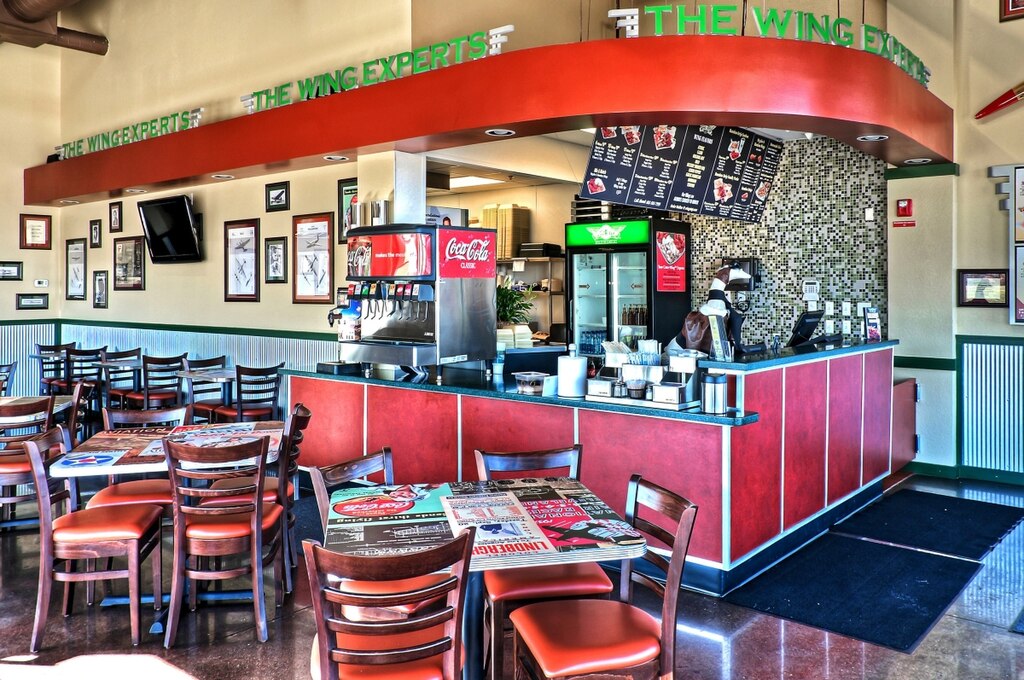About Wingstop
You probably know about Wingstop. In fact, you might’ve ordered Wingstop on DoorDash, picked it up at the restaurant, or sat down at one of their locations with your buddies to watch some March Madness!
They leave your fingers messy and your wallet empty. Recently, we have been customers of the wing experts (I mean come on, they even have a chicken wing calculator), mainly due to convenience of location. As consumers, we were rather impressed!
Previously, we lived close to Buffalo Wild Wings only, not a Wingstop in sight (tragic). However, after moving, we taste tested Wingstop and the taste, quality, and variety was on a new level.

As it relates to operations, Wingstop operates approximately 1,500 stores concentrated primarily in the US, however, gradually expanding outside of the states. Specifically, the wing masters reportedly have locations in six countries outside of the country.
It should also be noted that the company employs a corporate-owned and franchise restaurant model. One of their more well-known franchisees, the biggest sauce boss, Rick Ross, reportedly owns 26 franchises himself!

If you get nothing from our introduction, just know that Wingstop is a fast-food wing joint that is expanding aggressively.
Wingstop’s Numbers
Wingstop has a current market capitalization of $3.2 billion, 2020 reported total revenues of about $70 million, offering a historical annual earnings per share (EPS) of $1.43, all while maintaining a not very investor-friendly price-to-earnings (P/E) ratio of 78.51. As previously mentioned, the company seems to be in growth mode, especially as they emerged from the initial shocks sent into the business world courtesy of COVID-19.
Typically, the quicker a company grows, the higher or potentially more inflated their P/E ratio becomes.
Wingstop is a prime example of this phenomenon.

However, we should note the company’s share price has been pushed down in recent history, trading at around $146 in late February to around $108 as of this analysis (3/26/2022). As the company’s share price has drifted back down closer to earth, so has its P/E ratio.
It should be noted that although Wingstop stock’s price has pushed its P/E ratio into lower levels, the stock is still apparently hugely overvalued.
A price-to-earnings ratio a few notches above 20 shouldn’t necessarily be a huge red flag for investors however, Wingstop’s intrinsic value (what the company, in terms of assets, is actually worth) is astronomically far from its current share price.
In other words, the company needs to grow an insane amount in order to even get close to catching up to its current valuation. However, we like the current downtrend we’ve seen in Wingstop’s stock price recently. While we don’t necessarily classify ourselves as deep discount value investors at MacroHint, we do strongly believe that investors shouldn’t wildly overpay for a share of a company.
Ultimately, when considering whether or not Wingstop deserves a spot in your portfolio, the questions to consider become “can Wingstop continue growing at the rate they are in order to justify their current P/E?” and “is Wingstop a quality company with a quality business model?”
As it relates to the former, absolutely not.

During COVID-19, the company has seemed to be rapidly building up as many franchises and corporate-owned locations as possible. This likely pumped the stock up to stratospherically high levels and the nail in the valuation coffin was the reopening of stores around the world.
Irrespective of how long the current omicron variant (and other COVID-19 variants) persist, Wingstop’s prospective revenues and current share price are balloons that are slowly deflating before our eyes. Keep in mind, this isn’t necessarily a bad thing for investors interested in purchasing shares of the stock. In fact, waiting for the company to trade at a more reasonable share price and valuation could be a future opportunity in the making as the share price continues its descent.
On a more bearish note, Wingstop is the first stock we have formally analyzed that has eye-opening short interest.
Short interest is a metric that measures the general interest that investors have in betting against a stock. Wingstop’s current short interest sits at nearly 9% of the shares currently outstanding.
It is typically said that a stock with a short interest between 1 and 3% shouldn’t garner any worry, however, once that percentage climbs into the 4% and above range, there is usually reason for concern.
The price of Wingstop stock is too high right now and not worth paying a premium for (yet). Don’t take my word for it: listen to the 9%!
The short interest might come from the fact that some analyst platforms price shares of Wingstop at $26 (the stock’s perceived intrinsic value based on free cash flows).
Forgetting all of our opinions regarding current stock price valuation, let’s look at the fundamentals.
Wingstop’s Stock Fundamentals
Wingstop, as of one of its latest reports, maintains $249 million in total assets and $559 million in total liabilities.
Yikes.
While it’s common for companies in growth mode (and in general) to finance many of their growth expenses with leverage (debt), Wingstop’s debt to equity ratio should be frightening to the average retail investor.

Notably, it would be somewhat sensible to use a boatload of debt if the demand proof was in the number’s pudding. However, Wingstop’s respective cash flows haven’t been steady or exceptionally high enough to convince us that it’s a good time to invest right now.
“All price and no value makes MacroHint afraid to invest in Wingstop.”
Wingstop’s Future
Fundamentals aside, we absolutely love some of Wingstop’s strategic moves.
As Wingstop’s main competitors (for example, Buffalo Wild Wings) branch off into other menu items such as burgers and beer, Wingstop can, has and will seemingly continue to capitalize on what they know best; chicken wings!
They are one of the few companies we prefer to have one main niche and dominate it.
Wingstop seems to be eating up the wing-only market share. However, we should also mention that they also seem intent on using all edible parts of the bird.
In comes Thighstop!
Thighstop is a relatively new concept that focuses exclusively on, you guessed it, thighs!
We like the idea of Wingstop having this sort of subsidiary focused on an essential (and delicious) part of the bird. The more market share the wing experts are able to consolidate and dominate, the better.
We also are incredibly optimistic about the company’s interest in operating ghost kitchens, specifically as it relates to reducing overhead and labor costs and optimizing their delivery and pick-up system. We are also hoping that their potential interest in using food trucks to deliver to customers is strongly considered by its new CEO and executive team.
But what’s the sweet without the sour?
A future concern we have for both Wingstop and Thighstop relates to the somewhat historically volatile and supply-sensitive per-pound price of chicken wings.
During this past year (2021), the price of chicken wings has increased sharply (throughout the pandemic) as demand skyrocketed and supply became scarce.
Wingstop is a company that needs to keep its prices low.
In order to have a chance of matching its intrinsic value with its current stock price valuation, it is imperative the company hedges (if possible and/or practical) against both current inflationary pressures and commodity price (of chicken wings) fluctuations.
Should you buy Wingstop stock?
The wings are good, however, this is one of the few instances when being an avid consumer of a company and subsequently wanting to invest in the company diverge.
The current valuation is outlandishly high and as can be identified, there are a lot of different (somewhat uncontrollable) factors that could cause major headwinds for Wingstop.
On the other hand, if Wingstop continues to execute a strong and steady expansion over the next few years and increase its presence overseas (barring any aforementioned problems from occurring), the company will be on the right track to infusing true value into its currently inflated share price.
Until the stock price gets clobbered down to more favorable, reasonable levels or we start seeing more of a value proposition from Wingstop, we currently give the company a “hold” rating.
DISCLAIMER: This analysis of the aforementioned stock security is in no way to be construed as or understood as any form of formal, professional, or any other form of investment advice. We are simply expressing our opinions regarding a publicly traded entity.